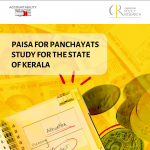
Uneasy Lies the Head that Wears the Additional Crown
8 August 2016
Hierarchies are important in the IAS as anywhere else in the government. It is not only important as a positioning tool within the service, but also to peg oneself against other hierarchies. There are complicated equivalence codes that equate IAS officers to positions in the armed services or uniformed services such as the police, for instance. In normal circumstances, these are of academic interest, but at times, they can be of critical national importance. For example, whether a Joint Secretary is higher in rank than a Brigadier, can determine who sits in front of whom in the Republic day parade audience.
Closely linked with the hierarchical positions is the protocol of whom you address by his or her name, or respectfully refer to as ‘Sir’, or ‘Madam’ (To my mind, the latter term has a faintly pejorative tinge to it, but I must admit, that is not so in Indian English). The ‘Sir’ or ‘Madam’ rule, keeping in mind India’s federal polity, varies from State to State. In some States that have strict hierarchical cultures – bordering on the obsequious – one is supposed to address officers who are even a year senior to you, as ‘Sir’ or ‘Madam’. In other, more relaxed States, you can dispense with this formality for an officer up to certain levels of seniority. In Karnataka, where I worked for the better part of my life, you could risk calling an officer five years senior to you by her name and get away with it.
However, this is not without its risks. When officers from different States are drawn to work in the Union Government secretariat, then havoc can ensue if one addresses an officer not used to it in his State, by his name. That can result in the destruction of your CR. (Patience; describing a CR deserves a few blogs entirely devoted to the subject). So, the best option is to err on the side of caution and address any object that looks senior to you, animate or inanimate, as ‘Sir’ or ‘Madam’. I have often been addressed that way (Not ‘Madam’, but ‘Sir’) by officers senior to me. The chagrin on their faces when they realise that it ought to have been the other way, is delightful to observe. I have not rued going prematurely grey.
In the secretariat, which is where most IAS officers end their professional lives, the designations take on a boring, repetitive tone. Using Linnaean terms, every officer belongs to the genus of ‘Secretary’. But within that, is a wide evolutionary spectrum of positions.
Let us not consider any position that does not use the term ‘Secretary’. For instance, dealing Assistants, Section Officers and Desk Officers are one celled organisms.
The ‘Under Secretary’ is the lowest member of the Secretary genus; the one that has just crawled out from the primeval slime. The next step on the evolutionary chain is the ‘Deputy Secretary’, a slightly evolved sub-species of this level is the ‘Director’. That is followed by the ‘Joint Secretary’. The Secretary sits at the top of the Secretariat food chain, the Tyrannosaurus rex of the genus. However, the Joint Secretary is no pushover; she is the velociraptor of the pack. The post of a Joint Secretary is a powerful position for many reasons. One is that Joint Secretaries tend to hold their positions for far longer that Secretaries, so Ministers tend to rely on them, often bypassing Secretaries. This keeps T Rexes on their toes.
Trapped in between the two carnivores, is a position that is neither here nor there – this is the position of the Additional Secretary. This hapless individual is an herbivorous offshoot of the chain, an evolutionary dead end. Basically, when a Joint Secretary grows long in the tooth, he is promoted as an Additional Secretary, but continues to perform the same tasks and responsibilities. In earlier days when stagnation in the higher echelons of the service was not such a serious problem, the position was akin to waiting in a transit lounge. An Additional Secretary worked as an understudy to the Secretary and quickly moved in to take the latter’s position. However, as the administrative system has grown to be top heavy, Additional Secretaries are often in such suspended animation for up to five years, during which they either become brain dead, or drive themselves crazy with the worry of whether they would ever graduate to the exalted position of Secretaries. Being Additional Secretary is akin to being a teenager between the ages of fifteen and eighteen; old enough to sprout a moustache, not old enough to watch adult movies. Walk in the corridors of power and if you discover people who are jumpy, nervous and shifty eyed, the chances are that they are Additional Secretaries.
While these positions result in a natural, and well-recognised pecking order in India, havoc can prevail when Indian officers travel abroad. I was once on a training programme in the US, which was also attended by an Under Secretary and an Additional Secretary from the Ministry of Finance. In the US, an Under Secretary is the equivalent of a Minister of State in India. Therefore, every time that the Under Secretary introduced himself, the audience did a double take and turned awfully respectful, addressing him not by his name, but as Mr. Under Secretary. On the contrary, the Additional Secretary was slapped on his back and called Ram or Rahim, or whatever was his name. The Under-Secretary revelled in the glory; the Additional Secretary was a nervous wreck at the end of the course.
How do officers make the grade? That depends on their CRs. More about CRs in my next blog.





